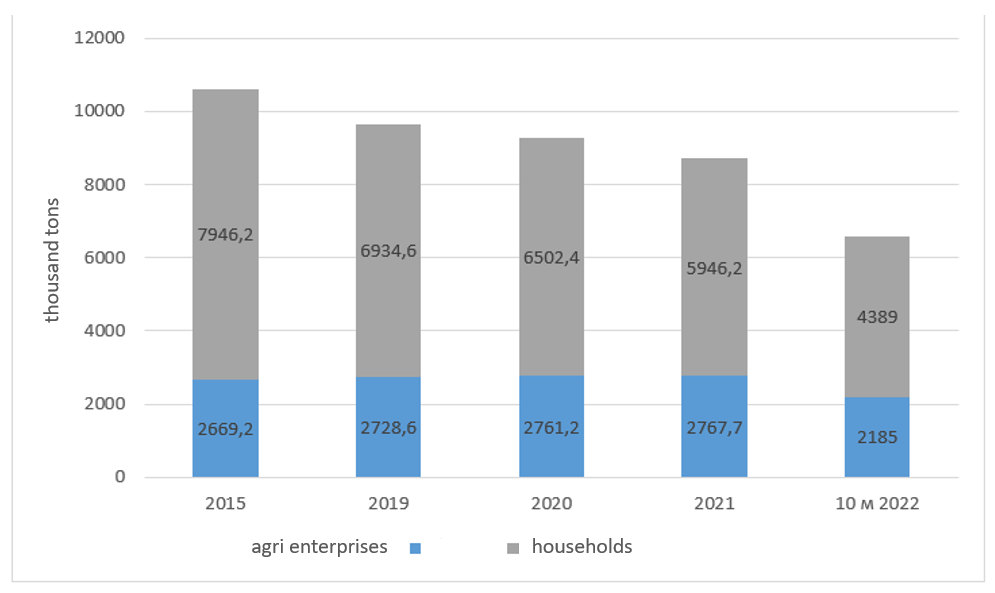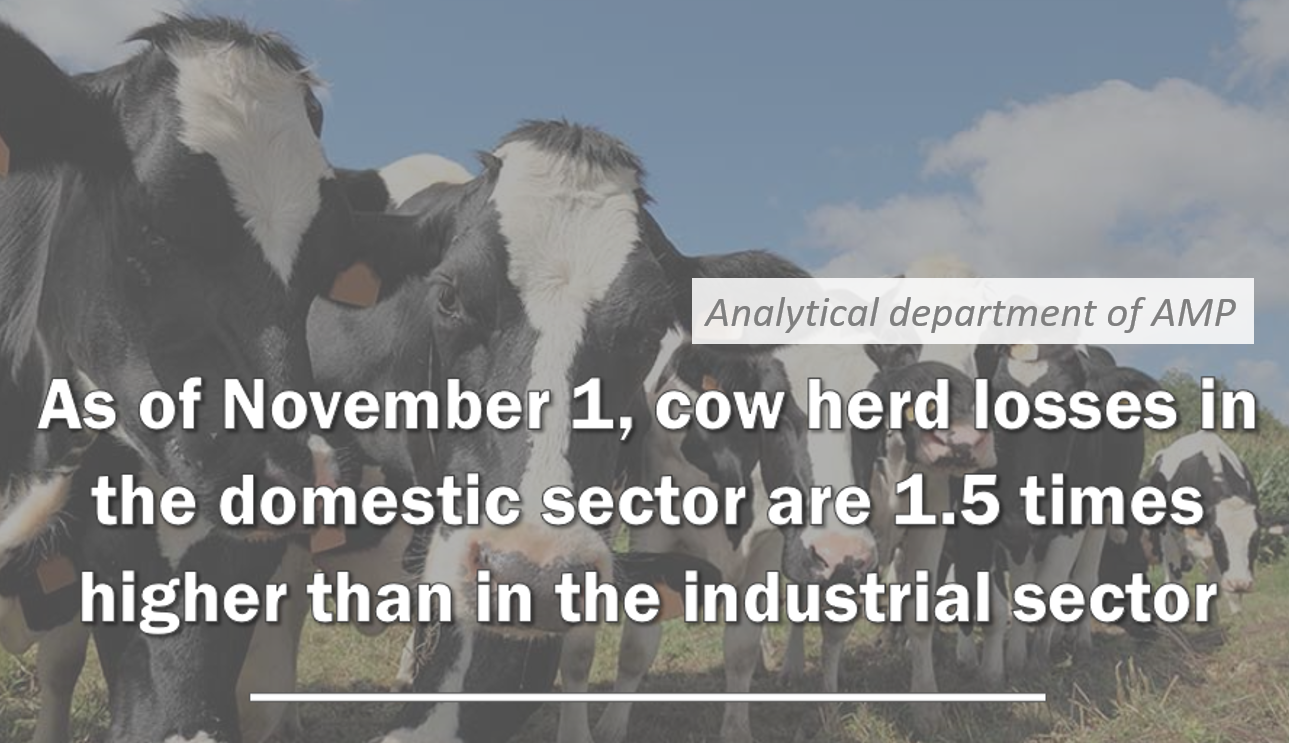According to preliminary data of the State Statistics Service of Ukraine, as of November 1, there are 2 million 584.3 thousand heads of cattle in Ukraine, which is 14% less than on the corresponding date in 2021. Including, 927.7 thousand cattle (-6.9%) are kept in industrial farms, and 1656.6 thousand (-17.5%) in households.
The total number of cows decreased to 1.4 million, which is 13.9% less than in 2021. According to the calculations of the SSU, the industrial herd of cows decreased by 8.4% and totaled 385.1 thousand heads, and the number of cows in the domestic sector fell by 12.4% and amounted to 1015.8 thousand heads.
The analyst of the Association of Milk Producers Yana Linetska reports.
Although, according to AMР estimates, the losses of the industrial herd of cows are higher and have already crossed the mark of 50,000 cows since the beginning of the russian aggression.
Against the backdrop of a reduction in the number of livestock and productivity of cows in the front-line zones and territories with active hostilities, milk production in Ukraine decreased by 12.4% in 10 months to 6.575 million tons. That is, the industry did not receive 929.6 thousand tons of milk.
However, thanks to the efficient operation of dairy farms in safer regions and the relocation of livestock from affected areas, it was possible to minimize the loss of industrial milk. Thus, during the analyzed period, 2.185 million tons of milk were produced, which is 120,000 tons or 5.2% less than last year, the SSU informs. Households were more sensitive and did not have the opportunity for such "flexibility", so production in this segment decreased by 15.6% to 4.389 million tons.
Meanwhile, receipts for the processing of milk of basic fat content decreased by 13.5% to 1.99 million tons. Moreover, the role of the industrial sector in food processing continues to increase: 1.7 million tons or 85.7% (compared to raw milk received from dairy -commodity farms, and the share of "homestead" milk has already fallen to 14.6%.
Dynamics of milk production, thousand tons
 Press service of the Association of Milk Producers
Press service of the Association of Milk Producers


